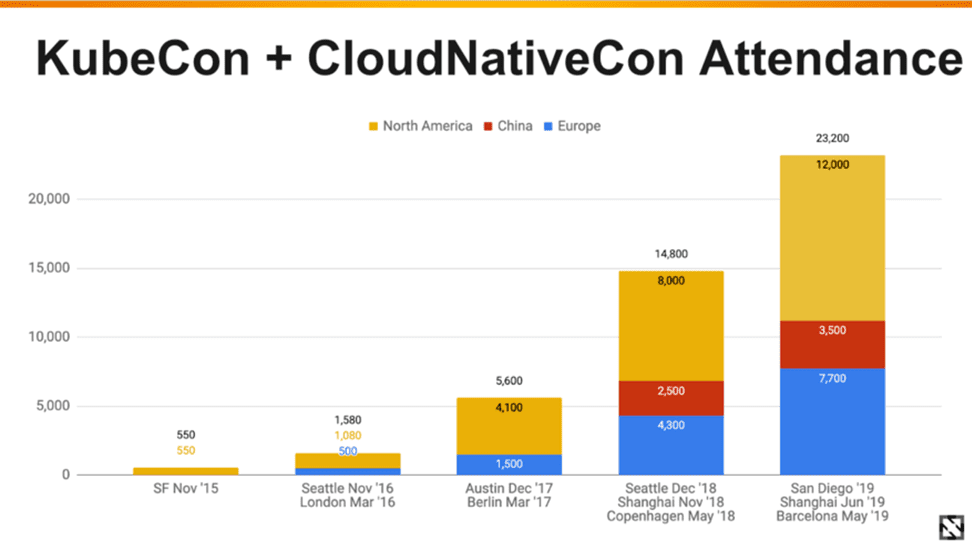It’s time to bid adieu to the software development trends that ruled the IT world for years. 2020, and the following years will witness a myriad of new software development trends in terms of development, implementation, and storage.
Starting with 2020, we’ll notice that the most exciting technologies the IT world launched are becoming commercially practicable, and some will even go mainstream. Some of the following trends aren’t exactly new, but they’ve earned a positive response, and businesses are looking forward to exploring their benefits. Last year, those who are passionate about software development may have heard a lot of buzz around them, but 2020 will be the year that cements their position in the IT world.
Welcome to the World of AI
It’s no surprise that artificial intelligence dominates the software development industry. Even if it were a constant in the area for many years, it would continue to grow and become essential to many technologies. Software developers look forward to the upgrades artificial intelligence will bring, and the industries will enter because it has started to affect all infrastructures.
In 2020, it’s expected industries like social media, travel, and healthcare to use artificial intelligence to provide customized experiences for their clients and to design prediction services. It’s not wrong to say that AI becomes the new competitive edge for areas across the spectrum and changes the way developers use resources. Statista predicted that the global AI-driven software market revenue would reach $118.6 billion by 2025, and software development companies find the use of artificial intelligence in creating products empowering.
Kubernetes Is the New Cool Kid on the Block
The ones who studied the container orchestration field may remember that for some time, there was a fight between Mesos, Docker Swarm and Kubernetes. As the subtitle suggests, Kubernetes won the battle, and not only that emerged as the new kid on the block, but it also continues to grow and detach from its competition. Also, on a side note, Mirantis acquired Docker enterprise and all its customers. If years ago, Docker was the primary container developers used, now everyone speaks only about Kubernetes.

The Kubecon+ CloudNativeCon North America registered a 50% growth of attendees in 2019, compared to the numbers from 2018. The following chart will provide a better picture of the growth of Kubecon+ CloudNativeCon over the years.
As the numbers show, Kubernetes won’t slow down in the following years; it will only grow stronger. The businesses that develop software in 2020 should bet on Kubernetes as the backbone of their operations.
Python Is the King of the Software Development World
Everywhere you look, you see Python. From enterprise software development to web development, data analytics, and machine learning, all industries count on Python to power operations. Read more about enterprise web development in this source.
TIOBE (one of the most well-known programming language ranking resources) ranked it as the third most popular programming language. Java and C still maintain their positions as the most popular ones, but time will tell how long they’ll be developers’ favorites. In 2019, the popularity of Python doubled in comparison with the numbers from 2018. And predictions say that its growth will continue in the following years, and soon it will reach its top competitors. The ranking from TIOBE also shows that Java is dealing with fatigue, people are looking for something fresh, and Python may deliver it.
Long Live Java and JVM
We’ll refer again to the index TIOBE provided to show that Java still is the most dominant programming language worldwide, and its reign will continue in 2020 (even if it experiences fatigue). JVM, its runtime, is an exquisite piece of software engineering and developers rely on it to be a reliable foundation for Java. However, Java isn’t the only one that uses JVM as runtime, Groovy, Clojure, Scala, and Kotlin also do it. Oracle also announced that it changes its license for JVM, and all its users need to pay a subscription to use it. This means that all organizations that rely on JVM languages now have to break the bank and pay the fee.
Rust, Typescript, Kotlin, and Swift Are Expected to Breakthrough
Over the last 10 years, several other programming languages emerged, and the IT world is finally ready to get rid of the monolithic ones and give the newbies a chance. 2020 will bring a shift from old restrictive programming languages to more specialized ones that focus on modernized developments in hardware and developer ergonomics. A Dedicated Development Team would know both old and new programming languages to cover a broader range of issues. Sometimes, the existing languages don’t hold the needed capabilities to face the changes in hardware (like the Cloud, Multi-Core), and developers need to switch to a language like Rust, Swift, Kotlin, or TypeScript.
To encourage software developers to experiment with new programming languages, Microsoft announced that it included Rust in the range of languages they use to create secure software. Google also announced its official support for Kotlin in Android, so it’s expected Kotlin to become one of the main competitors for Java.
The trend of using new programming languages to develop software will continue in 2020 and beyond, with more and more companies having a more in-depth look into the benefits Kotlin, TypeScript, Swift, and Rust provide.
Final Destination: Cloud
If 2019 was a great year for cloud providers, 2020 would be better. Not only small companies are migrating to Cloud, but also conservative organizations like banks, health care, government organizations, insurance providers, and even the Pentagon. It’s expected in 2020, and in the following years, organizations of all types and sizes to move their data in Cloud to protect it from cyber threats.
There’s no time to ponder about moving towards a cloud service. This year is the perfect time to try it, with reputable cloud providers like Google, Amazon, and Microsoft offering free credits for the companies that want to have a glimpse of how it would be to migrate to the new technology.
2020 is already here, and it will play a decisive role in software development trends.
software development concept -DepositPhotos


